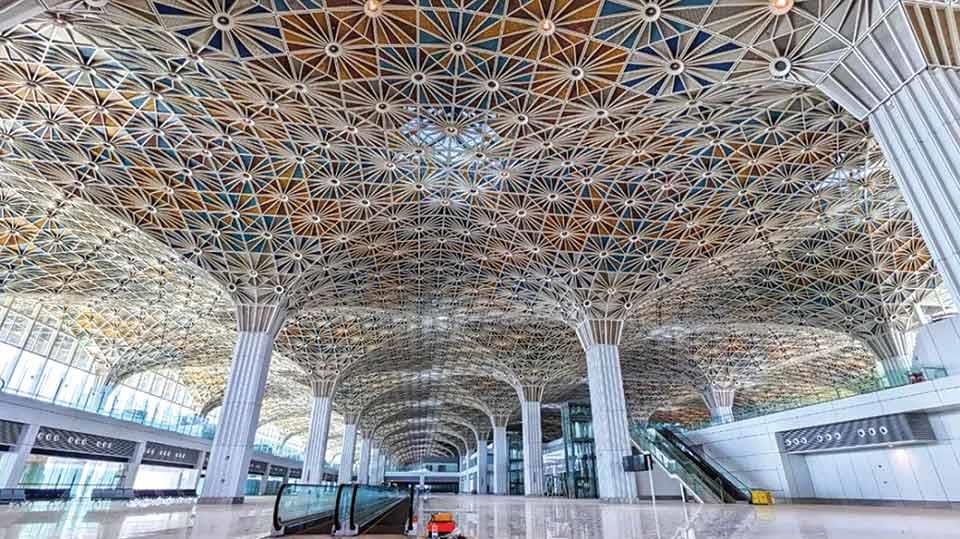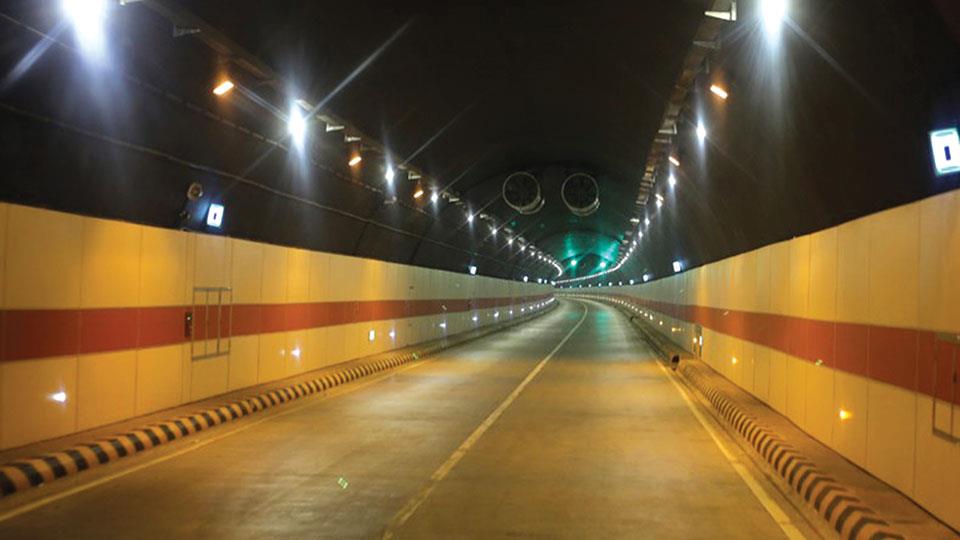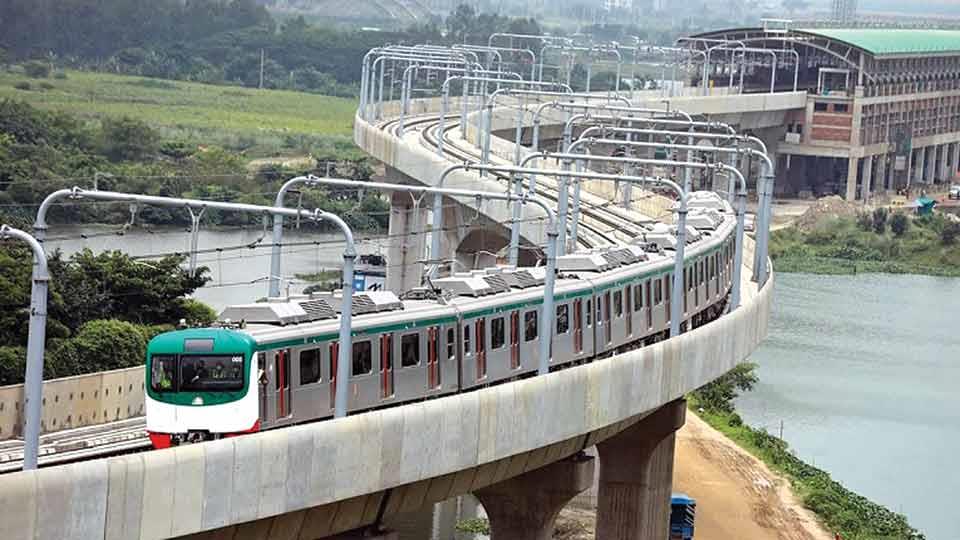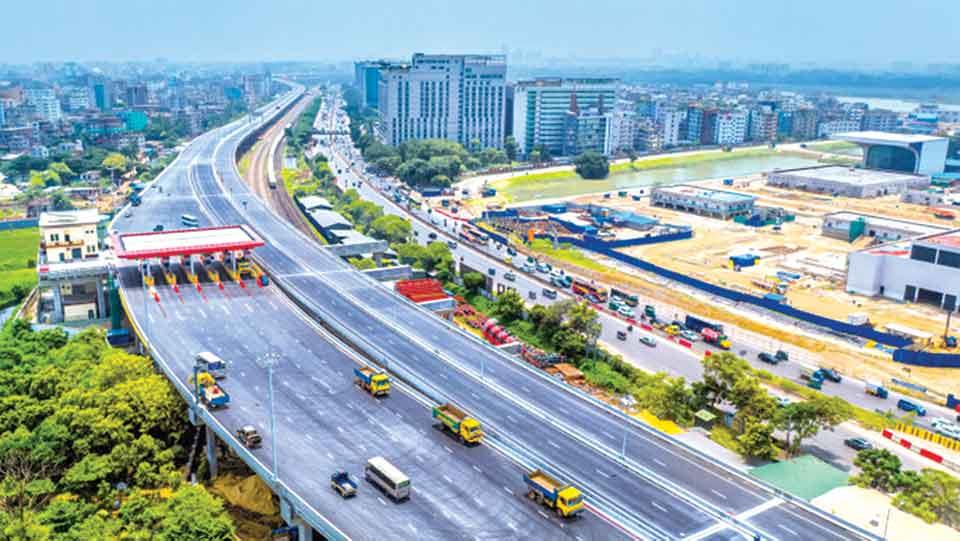(MENAFN- Bangladesh Monitor) Dhaka : Five massive development projects across the country have elevated it to a new travel era in 2023. These projects have paved the way for better connectivity across Bangladesh, increased contribution to the nation's GDP and accelerated socio-economic, trade as well as industries development countrywide. The significant five connectivity development projects are as follow:

Third Terminal of Hazrat Shahjalal International Airport in Dhaka
HSIA's T3
On October 7, 2023, Prime Minister Sheikh Hasina partially inaugurated the iconic Third Terminal of Hazrat Shahjalal International Airport. Covering an area of 542,000 square metres, the Third Terminal boasts a floor space of 230,000 sqm, housing 115 check-in counters, 66 departure immigration desks, 59 arrival immigration and 3 VIP immigration desks. Around 10 per cent of the work remains to be done. Travellers will be able to use the Third Terminal by 2024 end.
Upon full-fledged operation of the Third Terminal, HSIA's annual passenger and cargo handling capacity is expected to double. The annual passenger handling capacity of the HSIA would be 24 million (including the old terminals) compared to the current eight million and the airport will be able to handle 500,000 tonnes of cargo each year.
The Third Terminal is designed to connect with a multimodal transport system to enable passengers to enter and exit the international airport smoothly. The new terminal will be connected with the elevated expressway, underground railway (MRT-5, Kamalapur to airport portion) and also with the airport railway station through an underground tunnel. Besides, hajj pilgrims will be able to access the Third Terminal from Ashkona hajj camp through an underground tunnel.
Ahead of the Third Terminal's full operation, several foreign airlines are eyeing to start their operation to/from Dhaka Airport, which is expected to play a large role to take the country's aviation sector forward.
Cox's Bazar Railway Station
The inauguration of the new 100-kilometre long railway line from Dohazari to Cox's Bazar, on November 11, 2023, established the first ever rail connectivity from Dhaka and Chattogram to Bangladesh's southeast coast. The new development is expected to usher in a new era of tourism, trade and connectivity for the region.
The opening of the new oyster-shaped railway station in Hajipara of Jhelongja union of Cox's Bazar is part of the government's efforts to develop the region and attract investment. The new rail line is aimed at reducing travel time between Cox's Bazar and other parts of the country, making it easier and more affordable for tourists and business travellers to visit the region.
At the station, the main building's ground floor houses ticket counters, reception rooms, lockers, information centres, mosques, children's entertainment areas, passenger lounges and footbridges. The second floor accommodates shopping malls, childcare centres, and restaurants. The third floor boasts a 39-room star hotel, while the fourth floor houses a restaurant, childcare centre, conference hall, and officers' offices.
As many as 46,000 people can travel through this station a day and tourists can spend time at the beach by keeping their luggage in the station lockers.
The commercial operations began from December 1, 2023, with two intercity trains initially from Dhaka and Chattogram to Cox's Bazar respectively. From Dhaka, the train takes approximately 8 hours and 10 minutes to reach Cox's Bazar with stopping at two stations-Dhaka airport and Chattogram.

Bangabandhu Sheikh Mujibur Rahman Tunnel
Bangabandhu tunnel
Bangladesh unveiled the Bangabandhu Sheikh Mujibur Rahman Tunnel spanning under the Karnaphuli River on October 28, 2023. From the next day, the tunnel has been open for vehicular traffic. It stands as the very first tunnel in Bangladesh's landscape and the first-ever under-river tunnel for road communication in South Asia. The construction of the tunnel commenced in 2016.
It has forged an alternative route, connecting Chattogram to the destinations of Cox's Bazar, Teknaf and Matarbari. In doing so, it has reduced around 40 kilometers of the existing distance between these bustling hubs.
The main tunnel extends for 3.32 kilometers, featuring two four-lane tubes, each spanning 2.45 kilometers. Complementing this, two 5.35 km link roads at the tunnel's western and eastern termini, along with a 727-meter flyover at the Anwara end, are elevating regional connectivity. The tunnel allows vehicles to run at a maximum speed of 80 km. The tunnel resides at depths ranging from 18 to 31 meters beneath the Karnaphuli River.
The Tunnel will yield the Financial and Economic Internal Rates of Return (IRR) at 6.19 per cent and 12.49 per cent, respectively. It is forecasted to boost Bangladesh's GDP by 0.166 per cent.
The tunnel is expected to provide support to the Korean EPZ and the under-construction China EPZ. Furthermore, several major industrial groups have secured land for future factory development. New efforts are underway to construct 80 industrial facilities, spanning textiles, shipbuilding, food processing, steel, and cement, along the Karnaphuli River.

Metro Rail in Dhaka
Metro Rail
Metro rail is connecting capital's Uttara with Motijheel following the inauguration of its second phase on November 4, 2023. The government has taken this initiative of introducing metro rail so everyone can travel easily, save working hours, be free from traffic congestion and benefit economically.
On November 4, 2023, at Motijheel station, Prime Minister Sheikh Hasina also inaugurated the construction work of MRT Line-5 (Northern route), which will be a 20-km line from Hemayetpur to Bhatara via Gabtoli, Mirpur-10, Gulshan.
The physical construction work of MRT Line-1, the first underground metro rail in the country, started in February 2023. The new section of MRT Line-6 will connect Farmgate, Karwan Bazar, Shahbag, Dhaka University, Secretariat (Press Club), and Motijheel.
The length of the Agargaon to Motijheel section is 8.72km. Considering convenience, the route has been extended by 1.16 km from Motijheel to Kamalapur, which is expected to be completed by June 2024.
It takes 17 minutes to travel from Uttara to Agargaon on the metro, and 14 minutes to reach Motijheel from Agargaon, meaning that the travelling from Uttara to Motijheel will take around 31 minutes.
The government is implementing the fast-track project to construct the 21 elevated metro line from Uttara to Kamalapur at a cost of BDT 334.72 billion.
The metro rail will be able to carry 60 thousand passengers per hour and half a million passengers per day, and one train will arrive at each station every four minutes.

Dhaka Elevated Expressway
Elevated Expressway
Prime Minister Sheikh Hasina on September 2, 2023, inaugurated the 11.5 km Airport-Farmgate segment of 19 Dhaka Elevated Expressway, the first of its kind in the country, raising hopes of reducing traffic congestion and commuters' travel time in the capital.
It takes as little as 10 minutes for a vehicle, travelling at 60 kilometres per hour, to reach Farmgate from Kawla.
About 80,000 vehicles will be able to pass through the Dhaka Elevated Expressway every day.
The expressway is expected to increase traffic capacity within and around the city by improving connectivity between the northern part of Dhaka city with the central, southern and south-eastern parts.
In addition to providing a much-needed increase in traffic capacity, the expressway will ease existing overloaded roads.
When fully completed, the Dhaka Elevated Expressway will run from the capital's Kawla to Kutubkhali area of Dhaka-Chattogram highway via Kuril-Banani-Mohakhali-Tejgaon-Moghbazar-Kamalapur-Sayedabad-Jatrabari. The Airport-Farmgate section via Kuril, Banani, Mohakhali and Tejgaon will serve as an alternative route to and from the airport, one of the busiest routes in the city.
MENAFN01012024000163011034ID1107673332